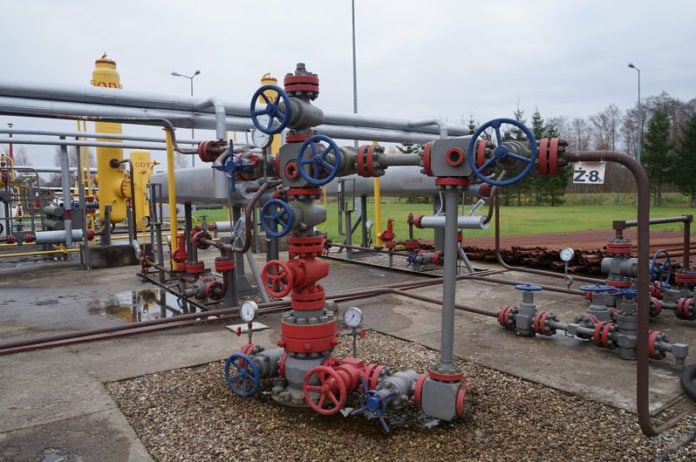Most internet providers are switching to fiber optics because it allows extremely high speeds and large bandwidth in comparison to conventional cable.
However, another advantage of the fiber optic is that the entire length of the cable can be used as a sensor.
In addition, fiber optic doesn’t conduct electricity and is not affected by electromagnetic interference.
The use of fiber optic is becoming more and more common in the oil and gas industry as well where it is used for well and pipeline monitoring.
Distributed acoustic sensing (DAS) and distributed temperature sensing (DTS) are commonly used in the oil and gas industry to measure temperature, pressure, and strain.
Related: Most Common Types of Wireline Logging Operations
What is Fiber Optic?
Fiber optic is made up of glass fibers that are covered with insulating material.
Light is sent down the cable and disturbances in the light can be analyzed and used to determine pressure, temperature, and strain along the cable.
All those physical variables slightly affect how the light travels through the fiber and therefore can be measured.
The big advantage of fiber optic is its high sensitivity, which means even minor changes in pressure, temperature or strain can easily be detected.
Using Fiber Optic for Well Monitoring
Fiber optic is used in the upstream oil and gas sector to monitor well production, determine producing zones and measure fracture performance.
Production monitoring can be performed by looking at how the temperature changes along the wellbore.
In addition to temperature, sound waves can be recorded as well to get an even better picture of the wellbore flow profile.
With regular logging tools, you can only measure wellbore conditions around the downhole tool, while the fiber optic line can detect the conditions for the entire well.
This means it is possible to monitor numerous zones at the same time.
Fiber optic can also be used in steam-assisted gravity drainage (SAGD) and cyclic steam stimulation applications to monitor the downhole temperature and pressure profiles to improve steam injection efficiency.
Related: How Is Oil Extracted From Oil Sands?
Permanent Fiber Optic Installation
In a permanent installation scenario, fiber optic is installed into the casing and stays there for the life of the well.
The advantage of the permanent installation is that you can get real-time downhole data anytime during the well operation and pinpoint any well problems right away.
This also allows seeing how the production profile changes over time.
This information can help to plan more effective drilling and completion programs for future wells.
Getting real-time reservoir information can also assist in keeping the reservoir model up to date.
However, some disadvantages are high costs as well as the potential for failure during the frac operation.
It is also not feasible to install permanent fiber on older wells.
Related: What is Wireline?
Retrievable Fiber Optic Installation
The main way to use fiber optic for temporary monitoring is to convey it into the well via coiled tubing or in some cases wireline to see which zones are producing.
A fiber line can also be used to monitor hydraulic fracturing operations by running it into an offset well.
This gives operators real-time feedback on fracturing efficiency and can help to optimize the treatments.
Pipeline Integrity Monitoring With Fiber Optic
Fiber optic can detect even a small pipeline leak right away and this information can be used to shut down the pipeline and avoid any bigger spills.
For example, if there is a leak, gas or oil will start to escape and will create either noise, temperature changes, or both that can be detected by fiber optic cable.
With fiber optic, it is also possible to detect minor ground disturbances along the pipeline.
One example would be a mudslide or shift due to a minor earthquake that can potentially affect the integrity of a pipeline.
This proactive monitoring can significantly decrease the number of pipeline spills.
Read next: How is Crude Oil Transported?
References:
https://dzone.com/articles/how-fiber-optics-has-played-its-role-in-iot-oil-an
https://en.wikipedia.org/wiki/Optical_fiber
https://www.pipeline-conference.com/sites/default/files/papers/Frings.pdf
